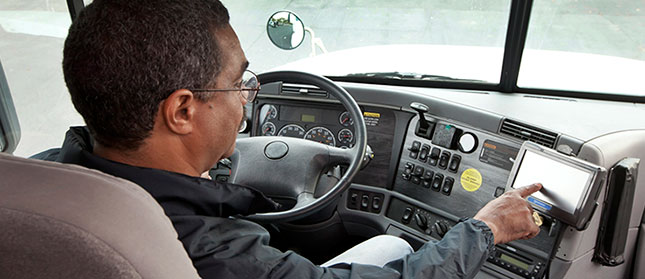
The final version of the U.S. DOT’s rule to mandate the use of electronic logging devices published in December maintained the major anti-harassment provisions previously proposed by FMCSA.
As reported by CCJ magazine, the new mandate, which is slated to take effect Dec. 18, 2017, devotes key components to “harassment” prevention measures and implements penalties for carriers that violate those measures.
FMCSA defines harassment as:
“an action by a motor carrier toward a driver employed by the motor carrier (including an independent contractor while in the course of operating a commercial motor vehicle on behalf of the motor carrier) involving the use of information available to the motor carrier through an ELD…or through other technology used in combination with and not separable from an ELD, that the motor carrier knew or should have known would result in the driver violating” this hours regulation and this hours regulation.
In other words, carriers are prohibited from using a logging device or information received from a logging device to pressure a truck operator to drive when he or she is out of hours, tired or sick or when the driver does not think he or she can safely operate due to weather or road conditions, CCJ reports.
If no hours regulations are broken, however, the agency could pursue penalties against the carrier under the broader anti-coercion rule published by FMCSA in November.
The key steps the agency takes in the 2015-issued ELD rule to protect drivers from harassment include:
Mute functionality: Required mute functionality alleviates one of the chief complaints that derailed the 2010 rule: Fleets using ELDs’ related functionality for messaging or alerts to interrupt drivers’ off-duty rest periods.
If drivers are using a device that can make audible signals or noises, the rule requires the device to have the ability to either automatically enter a muted mode when put in a sleeper berth setting or have the functionality to allow a driver to turn the volume off.
Editing rights: Though the rule permits edits by drivers and carriers to be made, it also requires the devices’ original record to be maintained, as well as requiring all users to have a unique login ID, so that edits can be tracked and annotations kept transparent. All edits, even if made by a carrier, must be approved by a driver before being added to the record of duty status, according to the rule. All edits must also include an annotation, a minimum of four characters, explaining the edit.
Location tracking: The rule does not require compliant devices to track drivers or vehicles in real time. According to the rule, the devices are only required to provide an approximate device location — within a 1-mile radius — during on-duty driving periods. FMCSA says limiting location tracking to “reduced proximities” aids in protecting truckers’ privacy and helps safeguard against harassment from carriers.
